Color to color thermal Dust is also often called color-color thermal powder, thermochromic pigment or heat sensitive pigment. In fact, it is a mixture of Color to colorless Thermal dust + ordinary color powder(usually we choose fluorescent pigment, which has weak covering power and will not affect the color of the temperature-changing pigment itself).
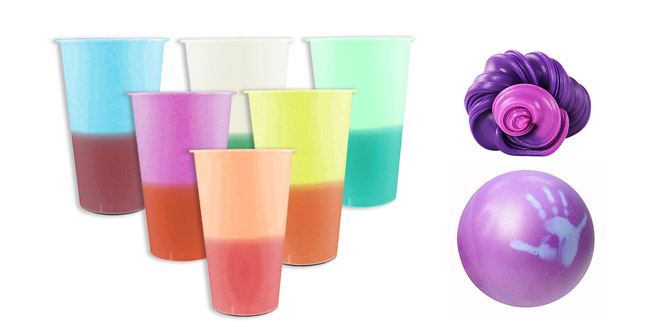
Definition:
Color A to color B thermal Dust = Color A to colorless thermal dust + Color B fluorescent pigment.
When the temperature is rising to a specific value(e.g. 35℃), Color A will disappear, and the base color B will show up.
Case 1: Thermochromic Plastic products
Black to Red Thermochromic pigment =5℃ Black thermochromic pigment powder + Red color powder
Low temperature (<5℃), you can see the black plastics.
High temperature (>5℃), you can see the red backgroup color.
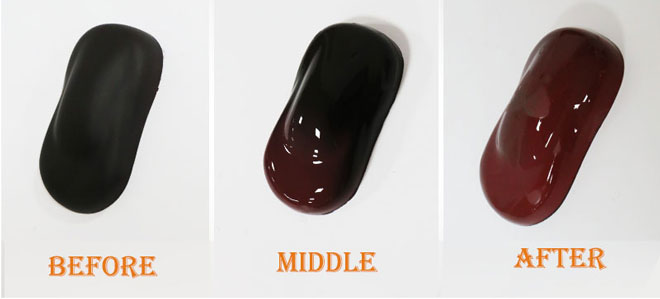
Case 2: Cold sensitive effect water cup (Cold color changing water cup)
For example, when making a water cup with a cold-changing effect.
Blue color + yellow color = green color
Turkey blue thermal dust (color to colorless series) + yellow fluorescent pigment are mixed, and you can get the effect of yellow turning green.
When cold water is poured into a plastic cup with a yellow base(see the below picture), green will appear, covering the original yellow base. Thus, a magic effect of yellow turning green is achieved.
When the cold water is poured out, the temperature rises to the specified temperature. At this time, the green will gradually disappear until it returns to the original yellow base.
Through the disappearance and appearance of green, the effect of one color turning into another color is achieved.

Heat-changing water cup
Of course, if you need to make a heat-changing water cup. It is the opposite principle.
That is, if you need a temperature-changing effect of blue to green, you only need to use a mixture of blue thermal dust + green fluorescent pigment to achieve your goal.
Principle: At room temperature, the blue thermal dust will cover the green background of the cup. At this time, what you see is the blue effect.
When the temperature > 45 degrees, the blue will disappear and become invisible. At this time, the green background will be displayed.
In general,
(Turns green when heated) Blue-to-green thermal powder = Blue thermal dust + Green fluorescent pigment
(Turns green when colded) Blue-to-green thermal powder = Green thermal dust + Blue fluorescent pigment
Color to color - Colored Card
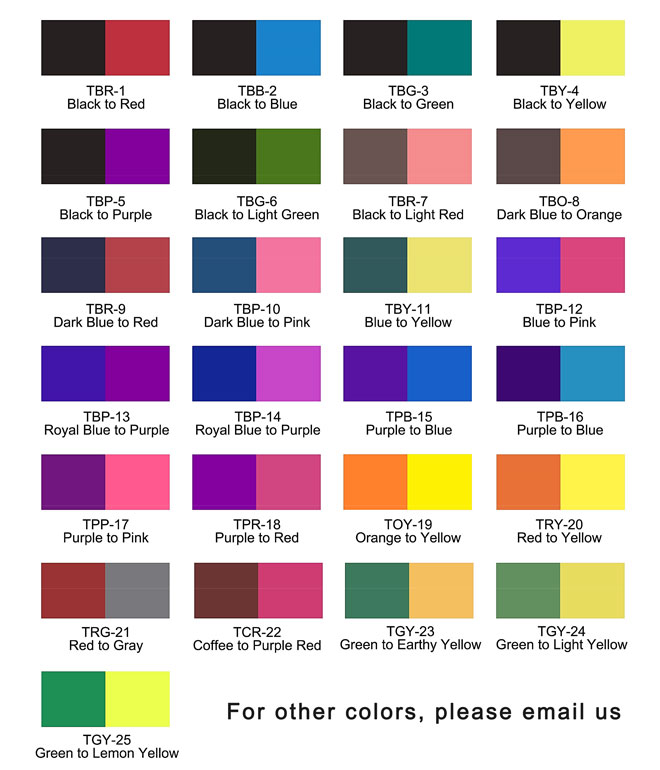
Other Color to Color Applications
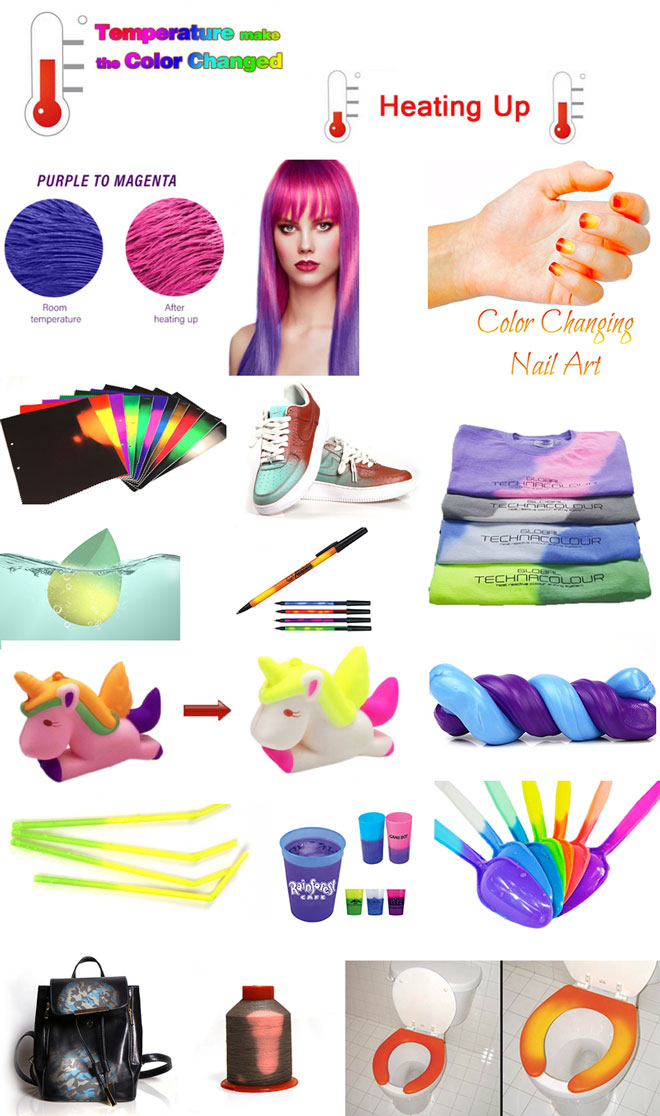
Of course, you can choose the finished product of our mixed color-changing temperature-changing powder and buy it directly.
The price is the same as the regular color-colorless thermal powder. Suitable for small goods production, saving time and effort.
You can also choose to buy our color-colorless thermal powder + fluorescent pigment and mix it yourself (we will give you technical guidance, it's very simple!). It is suitable for mass production, you can mix your favorite color, and save costs. (Because the cost of fluorescent pigment is much lower than that of color-colorless thermal powder.)
Finally: This Color to color thermal Dust is also divided into a reversible thermal dust (after color change, the original color can be restored) and an irreversible thermal dus (after color change, the color is permanently maintained).
Related Articles:
1. What is Color to Colorless Thermal Dust?
2. What is colorless to color thermal Dust?
3. What is triple color change thermal dust?
FAQ
Q1. What is the shelf life of the colored to colored thermal dust?
The shelf life of 1 year is generally no problem.
However, some colors of thermal powders will still work well even after 5 years, provided they are stored in a dry and dark environment. Low temperature value thermal dust should be stored in a refrigerator. (*The specific warranty period is subject to confirmation with us.)
Q2. What is the maximum processing temperature in general?
Generally speaking, for the colored to colored series thermochromic powder, the maximum processing temperature is generally below 210°C, which is no problem, do not exceed 230℃, and try to minimize the heating time of the material. (*Data is as of June 2025. As iSuoChen has been doing research and development, please contact us to confirm whether the temperature value is higher)
Q3. Do you sell colored to colored thermal inks and thermochromic masterbatches?
For some colors and some temperature value, We do sell this series of inks and masterbatches.
Q4. What temperatures can be generally used?
Our conventional colored to colored series can be 5℃, 8℃, 10℃, 12℃, 15℃, 18℃, 22℃, 28℃, 31℃, 33℃, 35℃, 38℃, 40℃, 43℃, 45℃, 50℃, 55℃, 60℃, 62℃, 65℃, 70℃, etc. The above temperatures are reversible temperatures.
But if you need 0℃, or higher ℃, or other temperature values, please contact us to customize.
Q5. What is the general amount of color-color thermal powder products?
When used for injection molding, extrusion processing or casting, molding, and curing molding, the amount of thermal dust is 0.5%-1.0% of the amount of plastic. The color-changing pigment and plastic particles should be fully mixed and evenly (a small amount of white oil can be used during mixing).
If ordinary pigments and color changing thermal dust are used to match colors, the amount of ordinary pigments (or dyes) is about 0.5-2.5% of the thermal dust.
Q6. Color-color thermochromic powder, suitable for outdoor use?
Not suitable.
Thermochromic powder have poor light resistance and will fade quickly under strong sunlight, so they are only suitable for indoor use.
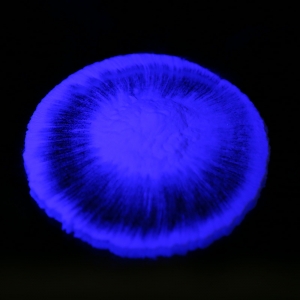
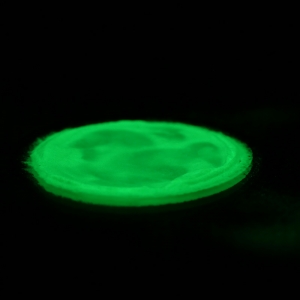
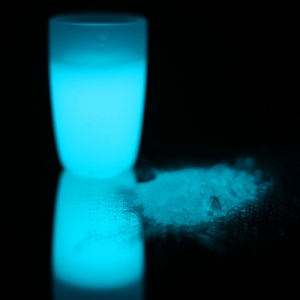
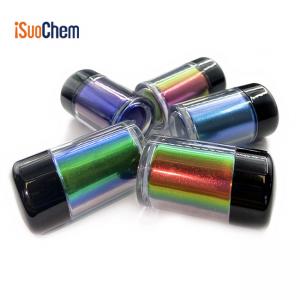
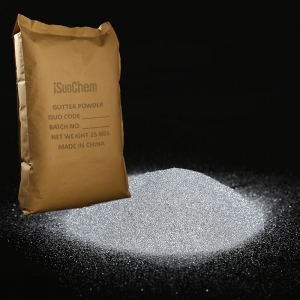
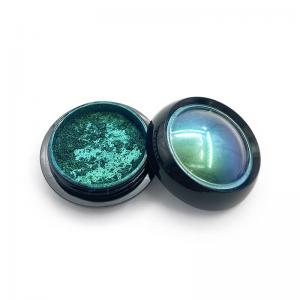






 +86 13965049124
+86 13965049124
 English
English  français
français русский
русский italiano
italiano español
español português
português العربية
العربية 한국의
한국의 ไทย
ไทย Tiếng Việt
Tiếng Việt









